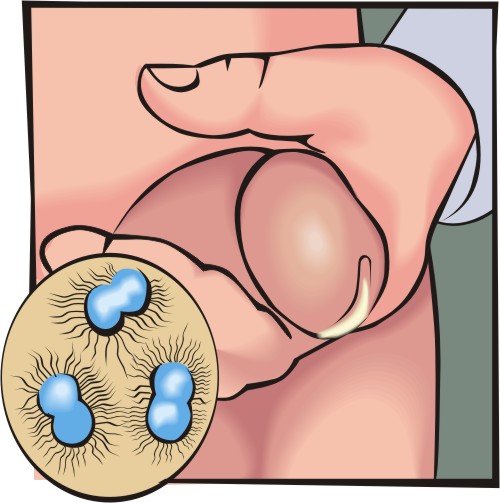
According the the Centers for Disease Control (CDC), over 600,000 new cases of gonorrhea occur annually in the United States. for women this can have a particularly devastating effect on their reproductive health since women often experience no symptoms. Women who are diagnosed with gonorrhea are also often found to have chlamydia. the CDC recommends that all women with gonorrhea be treated for chlamydia as well.
Often called the clap, gonorrhea is caused by the Neisseria gonorrhea bacteria. this bacteria can be found in moist areas of the body including the vagina, penis, eyes, throat, and rectum. Infection can occur with contact to any of these areas. an infected person may also spread gonorrhea from one part of their body to another by touch. Gonorrhea can be spread through all forms of sexual activity including oral, vaginal, and rectal sex. Mothers who are infected at the time of childbirth can pass gonorrhea on to their infants.
Who gets gonorrhea?
Although any sexually active person can get gonorrhea, it is most prevalent among those from 15 to 30. Women who have vaginal intercourse with an infected man have a 60 to 90 percent chance of becoming infected; while men who have vaginal sex with and infected women have a lower 30 to 50 percent chance of becoming infected by this sexually transmitted disease.
What are the reproductive health risks to women who get gonorrhea?
"Infections due to Neisseria gonorrhoea, like those due to Chlamydia trachomatis, remain a major cause of pelvic inflammatory disease, tubal infertility, ectopic pregnancy, and chronic pelvic pain in the United States."
Centers for Disease Control
1998 STD Surveillance Report
The Bartholin's glands may cause problems for women with gonorrhea. the ducts can become blocked and swell until a sore is formed. if this happens the lower area of the vulva will turn red on the infected side. if the infection is allowed to spread, untreated, it can affect the uterus with a high risk that a woman will contract pelvic inflammatory disease (PID) leading to possible future fertility problems.
Men who have untreated gonorrhea risk the bacteria spreading up the urethra where it possibly affect the prostate, seminal vesicles, Cowper's glands, and the epididymis where it will form a painful sore, and fever with chills. if the epididymis is scarred men may encounter fertility problems later.
What are the symptoms of gonorrhea?
The symptoms of genital gonorrhea differ in men and women.
The cervix is primarily affected in women infected with this sexually transmitted disease; however gonorrhea can spread to the uterus and fallopian tubes if left untreated. many women may not experience recognizable symptoms; however when symptoms do occur they can include:
abnormal bleeding
a burning sensation during urination
vaginal discharge
general irritation of the outer area of the vagina
The primary point of infection in men is most often the urethra. about one in five infected men may not experience symptoms of gonorrhea; however the majority who do have symptoms may experience:
a yellow pus-like discharge from the tip of the penis
stinging during urination
frequent urination
blood in the urine
swelling of the glands in the groin
the head of the penis may turn red
Other symptoms such as are pain, swelling, discharge can occur when gonorrhea affects the throat or rectum of both women and men.
What are the treatments for gonorrhea?
The CDC recommends several treatment options which include:
Cefixime 400 mg orally in a single dose,
Ceftriaxone 125 mg IM in a single dose,
Ciprofloxacin 500 mg orally in a single dose,
Ofloxacin 400 mg orally in a single dose, PLUS Azithromycin 1 g orally in a single dose,
Doxycycline 100 mg orally twice a day for 7 days
Patients who are unable to tolerate these treatments can be offered alternative pharmaceutical treatments.
How to prevent gonorrhea and other sexually transmitted diseases…
Condoms provide your best protection against gonorrhea and other sexually transmitted diseases. of course you have to know how to use a male condom , or you can choose to use the female condom– just don't try using both a male and female condom at the same time. Remember, everyone who is not in a monogamous long-term relationship needs to protect themselves by practicing safe sex routinely.
HOPE THIS HELP…
Please see the web pages for more details on Gonorrhea.